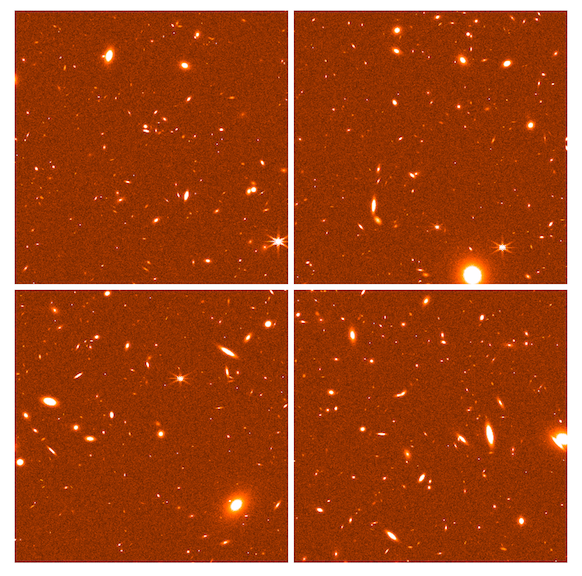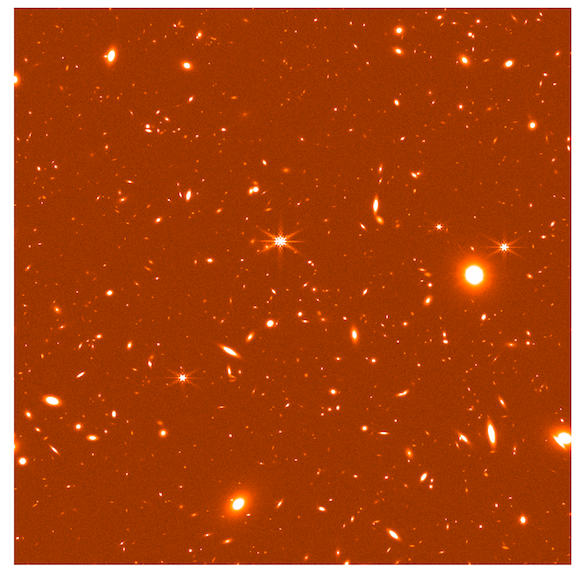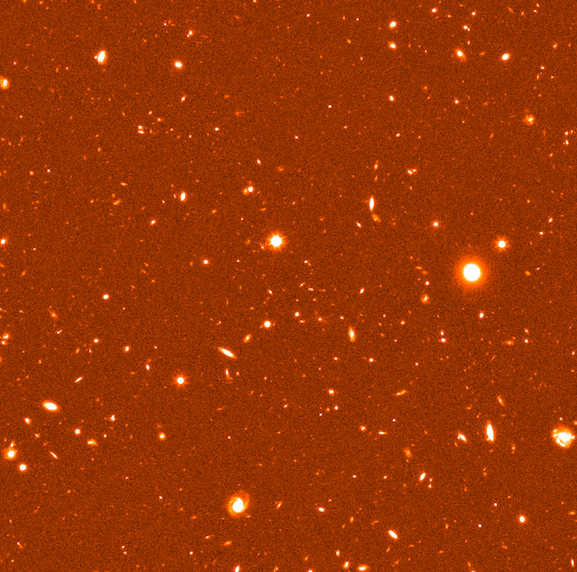JWST/NIRCam Images Simulated by PhoSim-NIRCam
The CANDELS GOODS-S F160W source catalog was used with PhoSim-NIRCam to create these images (a flat-fnu SED was assumed). To avoid saturation, eleven 1310-sec images (comparable to DEEP8 NGROUPS=7) were combined to produce Tint = 4 hr images. In this simulation, the NIRCam images do not necessarily look deeper than the CANDELS HST/F160W image because the former only contain sources that are seen in the latter.

JWST/NIRCam SW F200W Image
Total integration time: 4 hours (11 x 1310 sec); Sky background: 0.1 MJy/sr.
Download image
JWST/NIRCam LW F356W Image
Total integration time: 4 hours (11 x 1310 sec); Sky background: 0.1 MJy/sr.
Download image
HST/WFC3-IR F160W Image
The publicly available CANDELS image, which was used as the truth image for this simulation.

JWST/NIRCam LW Field Distortion
The yellow circles (r=1.5") mark the expected source locations in the distortion-free image.
The Developers
Purdue University
Colin Burke,
John Peterson
University of Arizona
Eiichi Egami,
Jarron Leisenring
Contact
Eiichi Egamieegami@as.arizona.edu
JWST/NIRCam team
Steward Observatory, University of Arizona